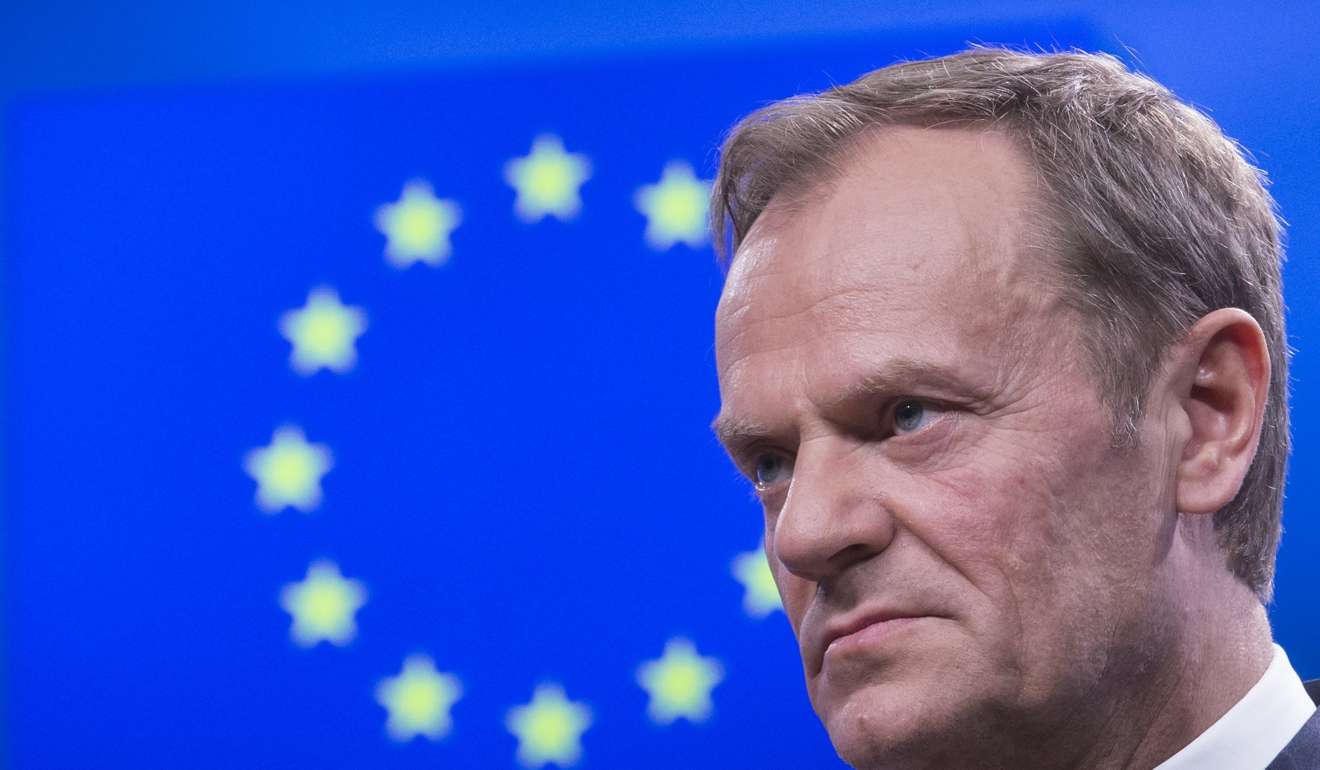
Countdown to Brexit: how Britain’s divorce from Europe could play out
Prime Minister Theresa May triggers Britain’s withdrawal from the European Union under Article 50 of the EU treaty on Wednesday. It should be out in two years. Here is a timeline, based on a mixture of public information and estimations by EU sources
The trigger
Wednesday, March 29 - EU officials expect to see Britain’s ambassador to the EU, Tim Barrow, come to the European Council building around the corner from the embassy around 1:30 p.m. (1130 GMT) to deliver May’s signed letter giving notice to quit the bloc. In London, May will be speaking in parliament.
Addressed to EU summit chair Donald Tusk, EU officials think the letter will offer a positive tone on talks and, in several pages, recap 12 goals which May set out in a speech on January 17.

Summit, guidelines, recommendations
Friday, March 31 - Within 48 hours after reading the letter, Tusk will send the 27 other states draft negotiating guidelines. He will outline his views in Malta, where from Wednesday he will be attending a congress of centre-right leaders. Brussels envoys of the 27 - Coreper - meet in Brussels to discuss Tusk’s draft.
April 11 - Government EU advisers - sherpas - from the 27 are expected to meet in Brussels to discuss guidelines. They are expected to meet again on April 24 for further revisions.
April 27 - EU affairs ministers of the 27 - General Affairs Council or GAC - meet in Luxembourg to prepare EU27 summit.
Saturday, April 29 - EU27 leaders meet in Brussels to agree guidelines and mandate Michel Barnier as chief negotiator.
Tuesday, May 2 - After May Day holiday, Barnier likely to go back to Council with his recommendations for how negotiations should be structured, seeking the governments’ approval.

Directives
May - The GAC will meet, again excluding Britain, to agree legal “negotiating directives” to bind Barnier. The GAC has a routine meeting scheduled on May 16 but could meet at any time.
Face to face
Finally, after nearly a year of phoney war since the June 23 referendum vote to quit, British negotiators led by David Davis will sit down with Barnier’s EU team. This may well happen soon after the April 29 EU summit. Full negotiations must wait until EU governments sign off on the directives but both can save time by fixing procedural arrangements - who will meet whom where, speaking what language, and so on - once Barnier has a mandate.
Once the 27 governments have signed off on the directives, negotiating teams will start talks, each tackling certain areas.

The divorce deal
December 2017 - Brussels wants a basic deal on a Withdrawal Treaty by year’s end. Key issues: the exit bill for Britain’s outstanding commitments; treatment of British and EU expats; dealing with outstanding EU legal cases; new border rules.
Transition to future relationship
2018 - May wants to negotiate a comprehensive free trade deal. Few see two years as enough time to agree one and Brussels wants to hold off starting talks until after a divorce deal. But London and some EU states may push for parallel trade talks. Most diplomats expect some synthesis of the two approaches.
October 2018 - Barnier’s target to finalise the Withdrawal Treaty, to give time for ratification by the European Parliament and a majority in the European Council by March 2019.
Autumn 2018 to Spring 2019 - Just to make it complicated, the Scottish government wants an independence vote once a Brexit deal is clear. But, May has so far rejected the call for a new Scottish referendum until after Britain leaves the EU.
B-Day
March 29, 2019 - Britain leaves. At any rate, it should do so exactly two years after May sends the Article 50 letter. As it happens, this Friday is the last business day of the quarter.
The date could be fine-tuned. Britain could leave earlier if it gets a deal, and the two-year deadline can be extended if all agree. But Brussels wants Britain out before EU elections in May 2019. Despite mutual threats of no deal, few want such chaos.
A period of transition
May and EU leaders say transitional arrangements may well be needed, to give more time to agree a future trade deal and give people and businesses time to adjust to the divorce. Many see another two to five years after Brexit for a final settlement.
If Scotland votes for independence, expect more years to negotiate its split from London and possible re-entry to the EU.

